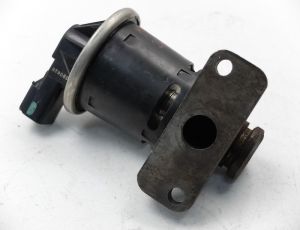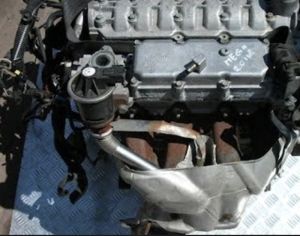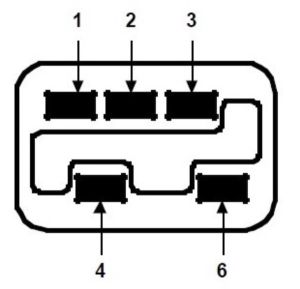EGR
EGR
The EGR valve in the IDE engine was present until 2001, and later, due to high failure rates and significant contamination of the intake system, its use was abandoned. The EGR valve is an extended with a potentiometer measuring the degree of opening, a standard EGR valve with increased flow. The problem appears after a short mileage, as the increased exhaust gas flow strongly contaminates the valve head, making it difficult to move. However, each trim of the valve results in an immediate reading error of the valve opening degree. In extreme cases, it may end with an emergency engine shutdown. Fortunately, the valve can be removed, cleaned, and driven. You can also plug it so that it does not get dirty, but in this particular engine it is not the best solution, because the presence of exhaust gases in the mixture not only impoverishes the mixture but also lowers the combustion temperature. When there is no exhaust gas, additional air is taken in place of the inert gas and the computer, based on the readings from the lambda probe, artificially increases the fuel dose. In addition, the suction resistance increases, which also reduces the efficiency of the unit. Nevertheless, most users blind the EGR valve inlet for fear of an unpleasant surprise while driving. The only difference in use is a slightly sharper response to the gas pedal in the 1700-3800 rpm range and perhaps a bit less economy. However, according to the computer data from the 350 km route, the difference was minimal 6.4 l / 100 km with the blind valve and 6.2 with the working one. (smooth driving at a speed of about 100-110 km / h), i.e. within the error limits.
The EGR valve only actuates under certain conditions:
- the air temperature is greater than 10 ° C, the engine temperature is greater than 70 ° C
- negative pressure in the intake manifold is between 300-650 mbar
- engine speed is between 1700-3800 rpm
- the engine load is within the given limits
The EGR valve is disabled in the event of incorrect data reading from:
- engine temperature sensor
- air temperature sensor
- pressure sensor
- speed sensor
- EGR valve




